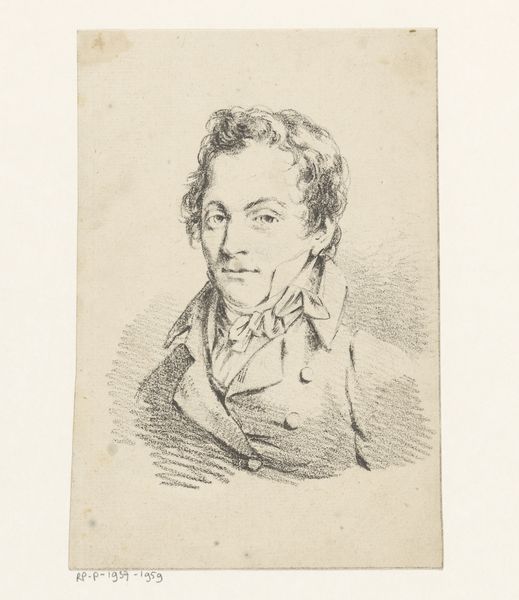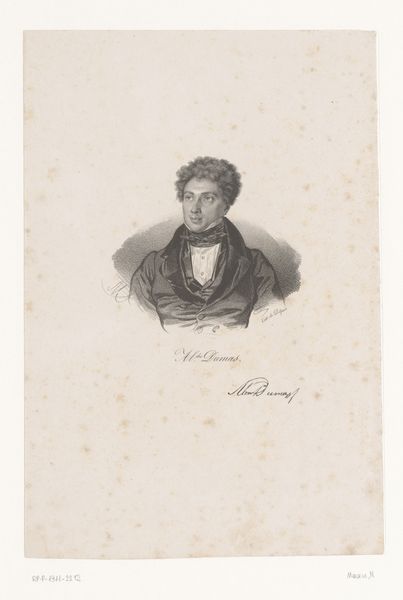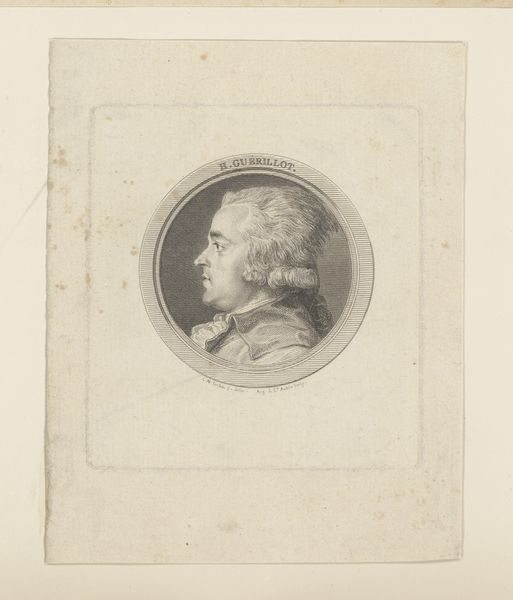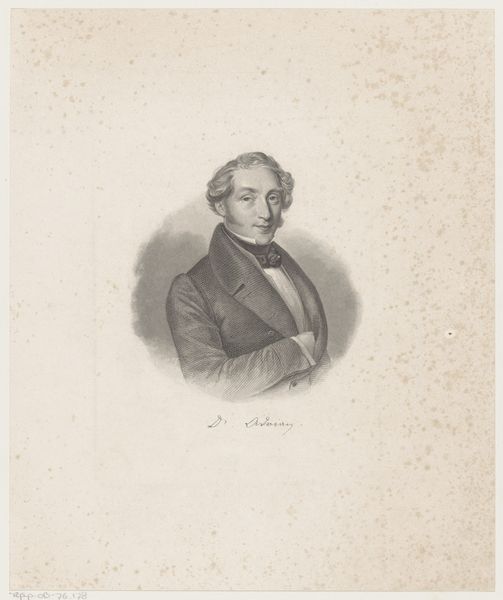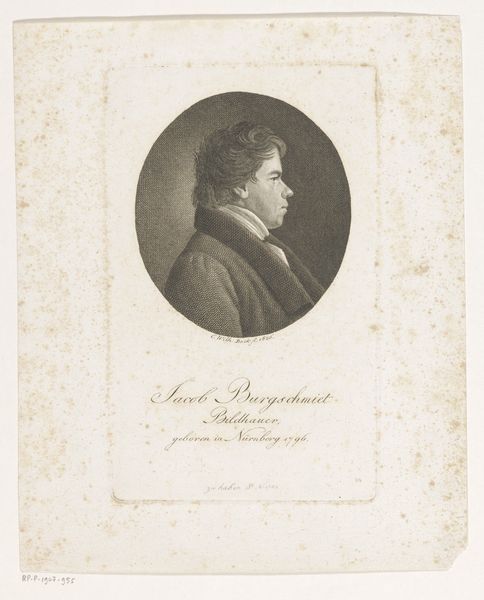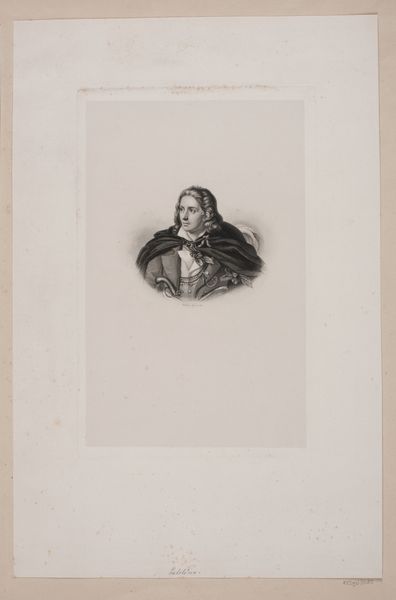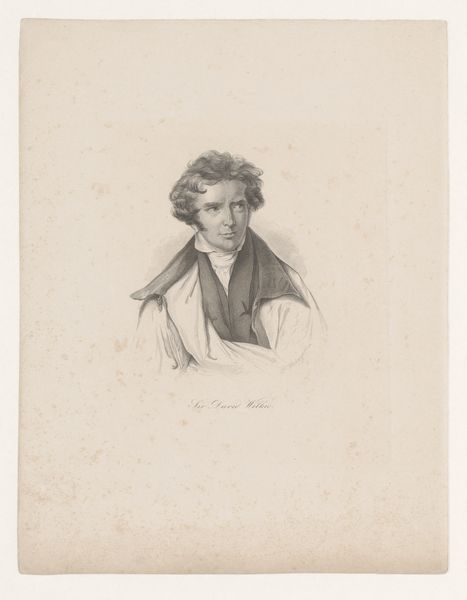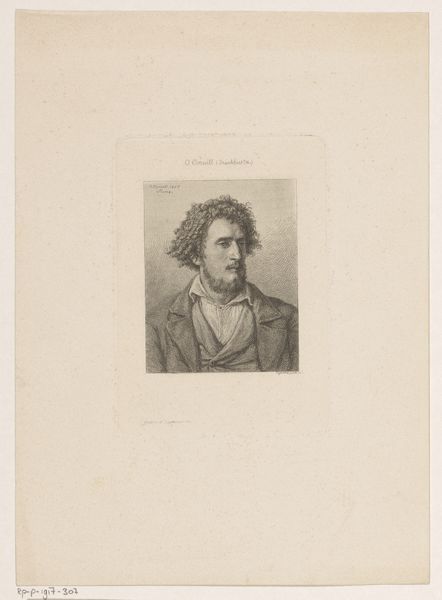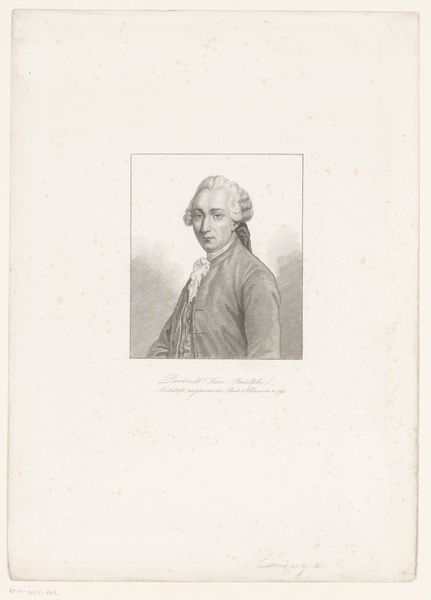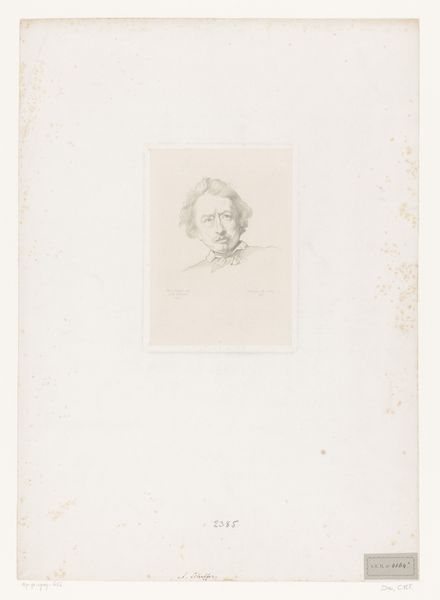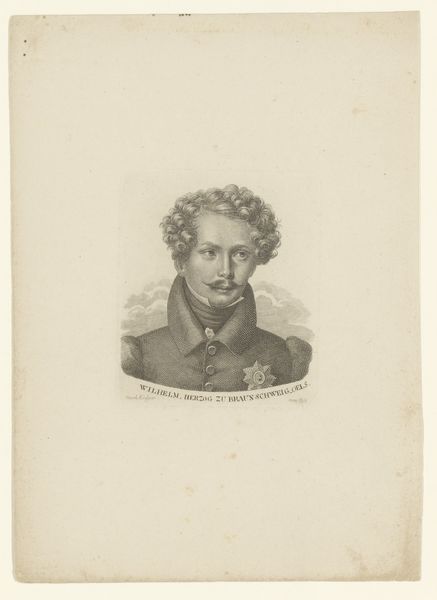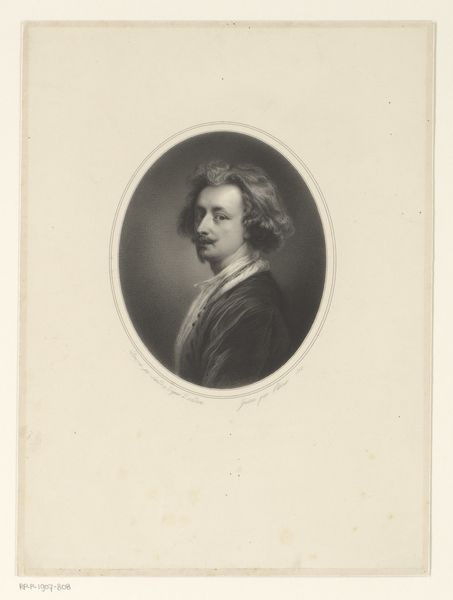
#
portrait
#
aged paper
#
light pencil work
#
homemade paper
#
pale palette
#
light coloured
#
white palette
#
personal journal design
#
personal sketchbook
#
watercolour illustration
#
paper medium
Dimensions: height 275 mm, width 185 mm
Copyright: Rijks Museum: Open Domain
Editor: So, this is "Portret van Anthony van Dyck," a drawing created after 1844, housed here at the Rijksmuseum. It's a delicate piece, mostly pale greys and whites on aged paper. It almost feels like a ghost of a portrait. What can you tell me about this image, and its place in the artistic world? Curator: Well, it's a reproduction, created long after Van Dyck's lifetime. Consider the cultural and social function of portraiture at that later date, particularly with the rise of print culture. How did this type of imagery democratize art and make it accessible to a wider audience? Was it aimed at an elite audience still, keen to collect images of famous painters? Editor: That's interesting, I hadn't thought of it as democratizing art! So it’s less about the sitter and more about making images affordable to everyone? Curator: Precisely. And, consider the politics of representation. Who gets remembered, and how? By the 19th century, Van Dyck was cemented in the canon, but this print helps us understand the *how* of that canonization. What does it mean to reproduce a master, making him available as an object of study and admiration in, say, a middle-class home? Editor: So, it's about making artistic legacy tangible, less about accurate representation and more about cultural role? It’s almost like an early form of fan art! Curator: Exactly! It shifts the focus from the individual to the institution of art itself, from the painter to the market around paintings. It shows how art and its reproductions functioned within society. Editor: Wow, that’s a great way of thinking about it, repositioning this delicate drawing within a broader cultural framework really brings it to life! Thanks! Curator: My pleasure, it’s about understanding the painting not as a singular creation, but a piece of cultural fabric.
Comments
No comments
Be the first to comment and join the conversation on the ultimate creative platform.
